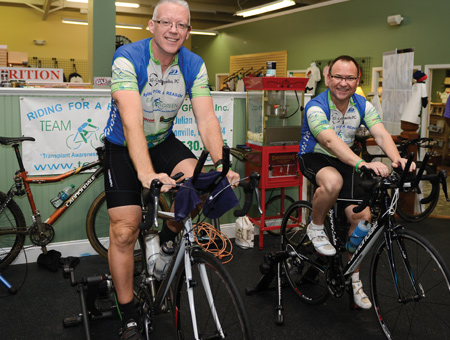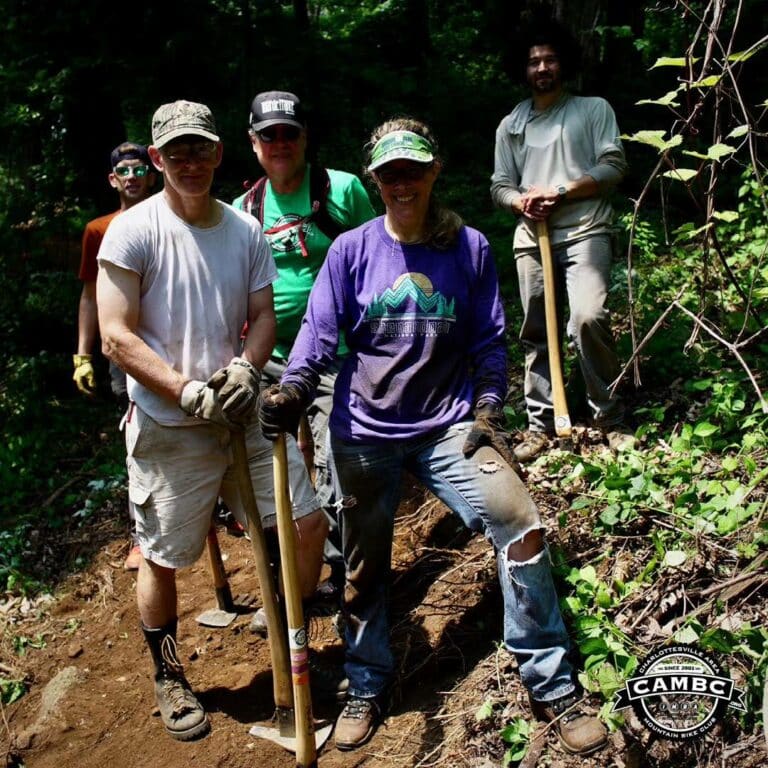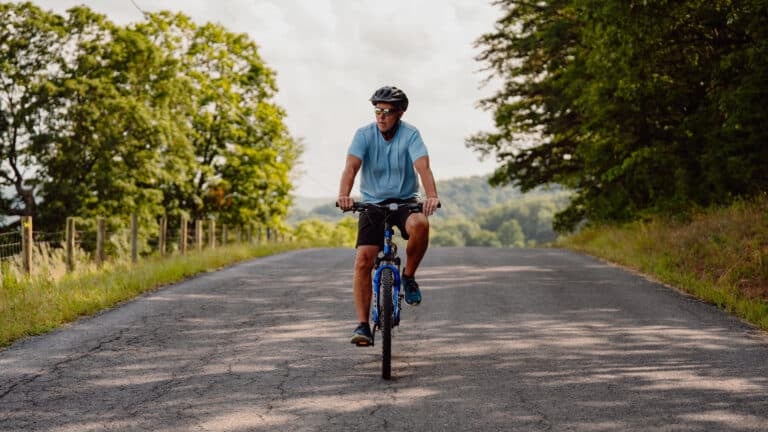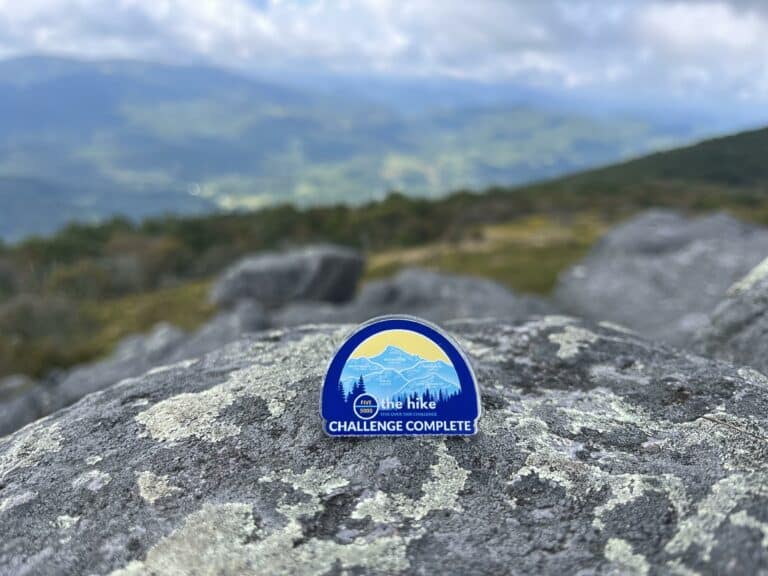Kelly Parham is not normal. The 57-year-old bike shop owner, husband, and father of two is an accomplished cyclist with some impressive ultra-marathon distance bike records to his name (not to mention an indoor rowing world record). Impressive, but what sets Parham apart from the rest of us is that when his cycling buddy, Peter Kite, needed a kidney, Parham offered his own. Without thinking twice about it. Then, just months after the transplant surgery, Parham rode 3,000 miles on his trainer, just to prove to the world that life doesn’t stop after donating a kidney. Below, Kelly Parham and Peter Kite talk with us about friendship, sacrifice, and eating Big Macs on a bicycle.
On how they met…
Parham: Peter told a pastor friend of mine that he wanted to ride a bike across the U.S. and the pastor sent him to us at the bike shop because we’d done a Race Across America as a relay team. He comes into the bike shop, small, but energetic, and says he wants to ride across America. But he hadn’t been riding a bike at all. So we sent him to the mall parking lot and told him to ride for an hour. He started hanging out at the shop all the time. We told him we were going to charge him rent.
Kite: In ’06, I met Kelly at Northstar Bike Shop. I had a hybrid bike but didn’t know anything about biking other than you pedaled and went forward. People told me, if I wanted to learn how to ride bikes, go find Kelly. I started hanging out at the bike shop and met so many people and learned so much about cycling. It was very peaceful in a way. One day, I walk in there and they had a road bike for me and told me just to pay them whenever I could. After that, I started riding with them on shop rides.
On giving up a kidney…
Parham: Peter has suffered from renal disease since he was born. He’s had more than 30 major surgeries and had already gone through one transplant when we met. We’d tease him all the time that we had a kidney for him if he ever needed it. One day, he walked into the store and told us his kidney was down to five percent functionality. I called Johns Hopkins and told them I wanted to be a donor, went through every test you could imagine, and was a 98 percent match.
Kite: When my kidney started to fail, I was looking at having a transplant from a high-risk donor. A drug addict or prisoner. Kelly didn’t want me getting a high-risk kidney, so he said, “I’ll just give you a kidney,” like he had it on the back shelf in the parts department. He told his family while having dinner, just like it was something completely ordinary, and there was no discussion. They just kept eating.
On sacrifice…
Parham: We have a Bible study group called Third Level. It’s a bunch of guys that are mostly ex-military. There are three levels of motivation. Basically three reasons why people do things. The first level is fear. The second level is greed. The third level is because it’s the right thing to do. We try to live our lives on the third level.
On gifts…
Kite: I was surprised Kelly offered a kidney, but it didn’t hit me right then, because you don’t want to get your hopes up. After all of the testing was done, and the transplant was going to happen, then it hit me. It still hits me. Kelly didn’t have to do this. It hits me every day that I have Kelly’s kidney. We don’t talk about it, but we know it. The relationship has gone up a step.
On friendship…
Kite: The relationship has been like Karate Kid and Mr. Miyagi. He had me riding around an outlet mall parking lot for an hour a day before it opened each day. I did it religiously. If Kelly said ride faster, I rode faster. I could see this change in myself. Kelly helped me prepare for a big ride across Georgia from North Carolina to Florida. He did the same ride in 26 hours. It took me 7 days. It was brutal, but I had a lot of fun doing it and it helped raise awareness for organ transplantation. Every time I want to ride and do something big, Kelly has supported me. He’s a blessing. Not just as a donor, but as the person who has introduced me to this wonderful life.
Parham: Pete has become a part of our lives, and I love having him around. He has so much energy. He’s small, but tough. He’s the toughest guy I know. You hang around with Pete for one day, and you’ll stop complaining about your own life.
On second thoughts…
Parham: I had to set a lot of people straight who thought I was putting my life or the well-being of my wife and kids at risk. As a donor, you don’t have to worry about what’s going to happen to you. The doctors won’t let you go through with a transplant if you’re not healthy. They asked me over and over if I’d go through with the transplant if I couldn’t ride long distance anymore. I told them I’d been living for 55 years. I’ve had my fun. If the worst thing to happen is I have to cut back on my bike riding, then so be it. Still, they’d call me once a week asking if I wanted to back out. They said they’d make up a medical excuse if I didn’t want to go through with it. Turns out, they’ve had so many people make it all the way to donation day, only to back out right before surgery.
On recovery…
Parham: I had to stay in Johns Hopkins for a week after the transplant. It’s basically like having a C-section. I look like I have four gunshot wounds and a knife wound. I had to walk for a few weeks, then as soon as I was cleared to ride a bike, I was riding up the gaps here in North Georgia. It really didn’t slow me down much at all. Turns out, as long as you pay attention to your hydration and nutrition, you can do anything you want. It doesn’t matter if you have one kidney or three.
Kite: The doctors will tell you that a donor’s life will be back to normal sooner than they think. But Kelly’s a machine. He’s not normal. Three days out of the hospital, he was walking 12 miles. His philosophy is simple: you can sleep when you’re dead. Until then, you’ve got a lot of things to take care of.
On riding across America…
Parham: We had the idea for the indoor ride across America to prove that people who donate kidneys don’t have to slow down. It took 11 days to do the ride. Pete was there hanging out. We watched all the tough-guy movies you can think of—Rambo, Rocky, movies where the good guys win. I’d take a four-hour break every night between 1am and 5am to sleep. The first two to three days went well, and then I developed bad saddle sore issues. I had doctors in there all the time checking on me, but there was nothing we could do about it. I just had to tough it out and work through it. I craved Big Macs. I normally don’t eat that stuff, but that’s what my body wanted: Cokes, Mountain Dews, Big Macs, and chicken soup from the Mexican restaurant down the street.
On kidney donations…
Parham: There are 90,000 people waiting for a kidney, and 13 die every day. Johns Hopkins is trying to build up a donor bank. You’re not at risk when you donate. The doctors wouldn’t put a donor at risk. There’s no reason why a healthy person couldn’t donate a kidney, but people don’t know that donating a kidney doesn’t slow you down. Our transplant was in April and I rode 3,000 miles in December. After hearing about the ride, eight people called Johns Hopkins about donating.
Kite: I founded a nonprofit called Team Green. We work with the Georgia Transplant Foundation doing education and fundraising. Donors are back on their feet quickly after surgery, and the recipient has a second chance at life. It gives them a way to walk away from the dialysis machine and hopefully never have to go back to it.
On looking on the bright side…
Kite: After my first kidney failed, I went on dialysis for more than eight years. I learned how to play golf on the machine. Life is all in what you make of it. It sucks to come to the hospital, but life is still good. I have no complaints. Maybe I’m tough, or I’m crazy. I don’t let things get to me. It is what it is.








